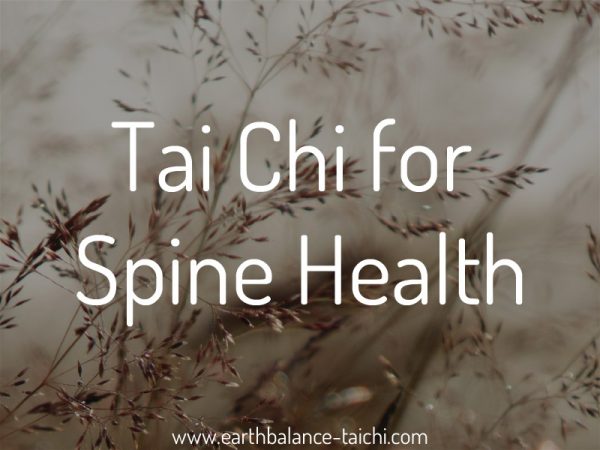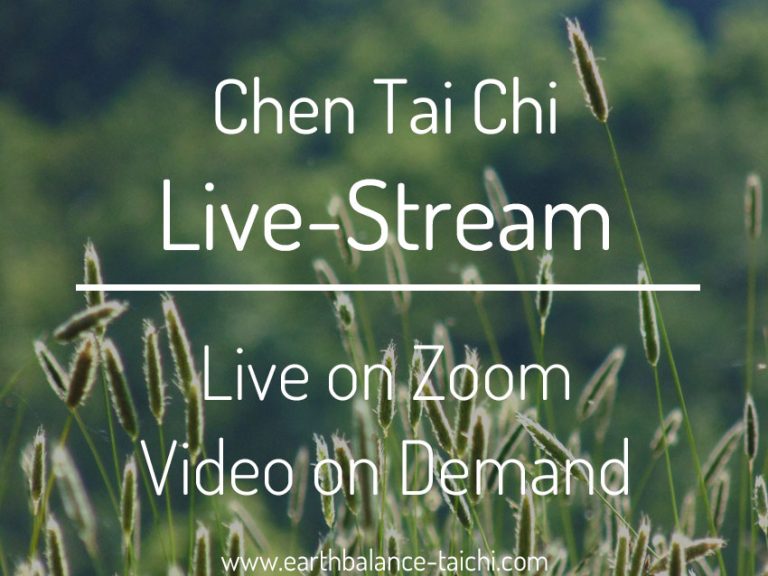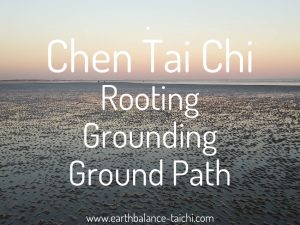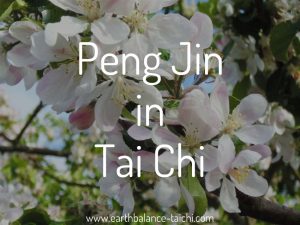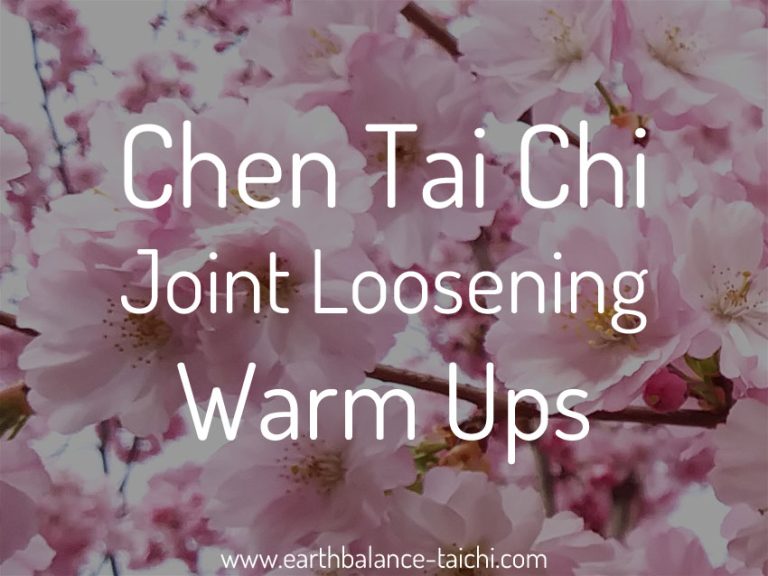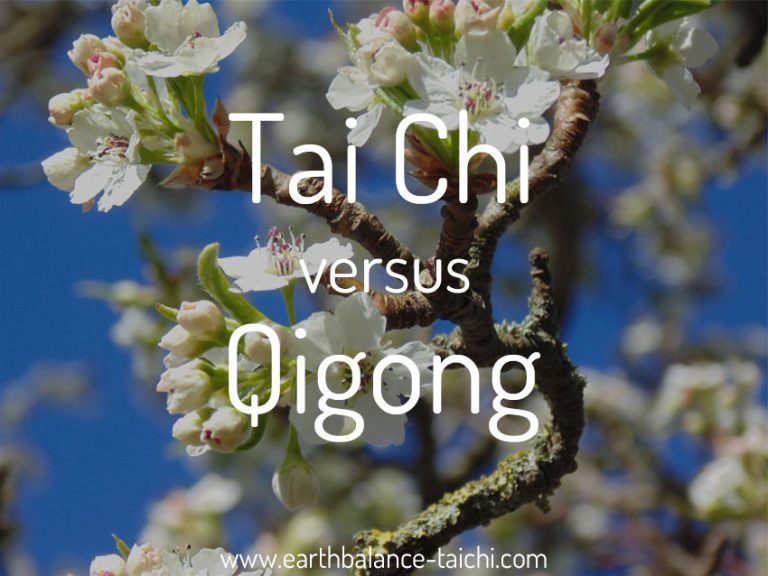Ding in Tai Chi

Ding in Tai Chi
How to align your spine correctly in your Tai Chi practice.
The principle Ding in Chen Tai Chi means maintaining a well aligned upright spine. It is sometimes described as:
- Imagine a piece of string is pulling you up from the crown on the top of your head.
- Elevate the crown and lift the spirit.
- Be suspended from the top of your head.
- The baihui point (crown) on top of your head is suspended by a thread.
All of these are correct, they have the same meaning, except they are half of the principle. You need to counter upward expansion with an equal opposing grounding and rooting quality. This creates expansion between the pelvis and the crown. This is symbolised as separating yin yang, “sinking the lower dantian” as the yin part, and “suspending from the Bai Hui (crown)” as the yang part. Maintaining an upright spine is achieved by balancing and separating yin yang. I describe this to my students as heavying the hips, lengthening the spine and raising the crown.
If you only raise up like a string is pulling you upwards, this gives the assumption that the lifting up is external to you, which is incorrect. You are in control of the lengthening of the spine. If you only focus on raising up from the head, this will cause you to become uprooted and unstable as your momentum shoots upwards. This will destabilise your centre of gravity making your vulnerable to incoming force and unable to redirect or generate force = no Tai Chi.
By focusing on an equal and opposing lengthening quality in the spine, this creates an elastic rebounding strength. By aligning the body, especially the knees and pelvis, then rooting the lower body and expanding the upper body vertically, this stretches and lengthens the spine, creating space and release between the vertebra. You can then freely expand, compress and rotate the spine as you move, which is as vital for spinal health as it is for martial power.
The caveat is to not exploit the other Tai Chi principles whilst lengthening, which means not over stretching into tension nor over compressing into misalignment. Developing this body awareness helps to loosen the spine whilst stretching it. This is part of the principle peng jin and fang song.
Head and neck alignment
Part of the Ding principle is also the head and neck alignment. Avoiding over extension and stiffness is key. Gently lift the back of the skull up, the occiput which is the bulb by the base of the head. This will naturally raise your Bai Hui (crown point) up. It will also lengthen the vertebra in the back of the neck. The motion of raising the occiput will drop and withdraw the chin slightly. Avoid forcing the chin to withdraw towards the spine as this will create too much tension.
Pelvis alignment
The head and neck alignment is paired with aligning the pelvis into a neutral position, with a relaxed lower back and the tailbone lengthened down, not exaggerating the pelvis tilting forwards or backwards. Read more about the lower back alignment in my article on spine health.
How to train the principle ding?
- Traditional standing practice (Zhan Zhuang).
- Loosening exercises and warm ups.
- Silk reeling exercises.
- The Tai Chi forms.
- Daily life.
What do you need? Hands on correction from your instructor.
Health benefits of a well aligned spine
- Improved head and neck mobility.
- Less neck tension.
- Less shoulder tension.
- Improved shoulder mobility.
- Improved blood circulation to the brain.
- Improved spinal fluid circulation.
- Improved blood circulation.
- Improved lymph system circulation and drainage.
- Space for diaphragmatic breathing.
- Internal organs are aligned and able to function.
- Muscles are aligned correctly, not over lengthening and shortened.
- Central nervous system and nerves that come off the spine and not compressed / compromised.
- The weight of the body, has no resistance in the spine, and can transfer down to the ground.
- Improved qi flow along the Conception and Governor channel (Ren and Du Mai).
If you sit all day, your vertebra become compressed over time, which can lead to spine problems like herniated discs and irritated nerves. The principle ‘Ding’ helps to open the spine, creating more room for the nerve holes (foramen) where the nerves from the body connect to the spinal cord through the vertebra bone. As we age, these holes become smaller, and can compress the nerves, think sciatica! The muscles also become shortened or hyper-lengthened by a seated posture, which leads to weak core muscles, weak back muscles and a weak diaphragm muscle.
Why align the spine in Tai Chi?
“Health follows the power lines”. This phrase means that the principle ding when established helps both health and martial power. There is no difference training for health or training for martial power, it’s the same training. As a martial art, having the ability to absorb incoming force and redirect it is paramount. In a well aligned spine incoming force or pressure does not get stuck in the body. Without resistance from a misaligned spine, the incoming force can travel down the body to root into the ground. Without this, there is no Tai Chi form, no push hands and no martial art, as your structure is unstable. Improving spine alignment also helps the other Tai Chi principles work together e.g. peng jin, fang song, ground path etc.
What causes a misaligned spine?
- Poor knee alignment.
- Poor pelvis alignment.
- Tight lower back.
- Collapsed chest.
- Slouching torso.
- Ribs or chest flaring out.
- Shoulders swaying back.
- Dropped head.
- Lack of body awareness where the brain thinks the habitual posture is upright.
Beginner Tai Chi students typically do not have much body awareness or understanding of body mechanics and good alignment. When asked to upright the spine they may misalign the spine by flaring the chest, swaying back the shoulders, locking the knees and hips, tilting the pelvis, leaning back or leaning forwards. It takes time, focus and hands on teacher correction to help train the principle ‘Ding’.
Typical misaligned spine postures
Leaning back: When aligning the pelvis correctly in Tai Chi, the lower back is relaxed and the tail-bone is lengthened down. This helps reduce the curve in the lower back, which is when the pelvis has tilted forwards, called anterior tilt. In Chen Tai Chi we bring dantian to mingmen, which means filling the lower back, like a brace supporting the lower back with the abdomen. This brings the pelvis into a neutral position, not tilting forwards or backwards. With beginners, when they try to upright the spine whilst in a hip squat, as the majority of people have tight lower backs from sitting, this means their lower back doesn’t have the stretch to stay upright, resulting in their spine leaning backwards.
Locked knees: The knees must remain bent throughout your Tai Chi practice, in varying degrees of a hip squat. If the knees move to a straight legged position, and they lock backwards, this changes the alignment of the pelvis creating an exaggerated curve in the lower back (anterior tilt again). This compromises the vertebra in the lumbar spine, as they are not supported, they are compressed posteriorly.
With the two examples above, any incoming pressure or force, or even the weight of the head, shoulders and torso will get stuck in the lower back. When this is repeated over time this may cause lower back problems. Usually this can be overcome by the teacher adjusting the student in person, guiding their body into the correct position. The student must then learn what that feels like and try to replicate this over time.
Chen Tai Chi - Live Online Tuition
Instructor Nicola is passionate about sharing Chen Tai Chi with her students. She provides live online private tuition via Zoom video call from UK time-zone or through distance learning videos at a time convenient to you. The Chen style Tai Chi syllabus covers Chen foundations, silk reeling drills, 5 elements form, 4 corners form, 18 form, 74 form laojia yi lu. Learn through traditional methods to improve the quality of your movements, expand your knowledge and develop your training. Join Nicola's virtual classroom, teaching "from my home to yours".
Chen Tai Chi - Livestream Group Class
Our online group class covers a variety of Chen Tai Chi movements. Each lesson will look focus on the different layers of learning Chen style Tai Chi whilst exploring principles and alignment in movement. The lessons include loosening exercises, Qigong breath work, standing practice postures, silk reeling exercises, Chen Tai Chi movements. Find out more.
As with all medical conditions, injuries and/or ill-health, please consult with your Doctor prior to starting a class. Tai Chi, Qigong and Meditation are not a replacement for conventional medical treatment. This article is for information purposes only and must not be taken as medical advice.
